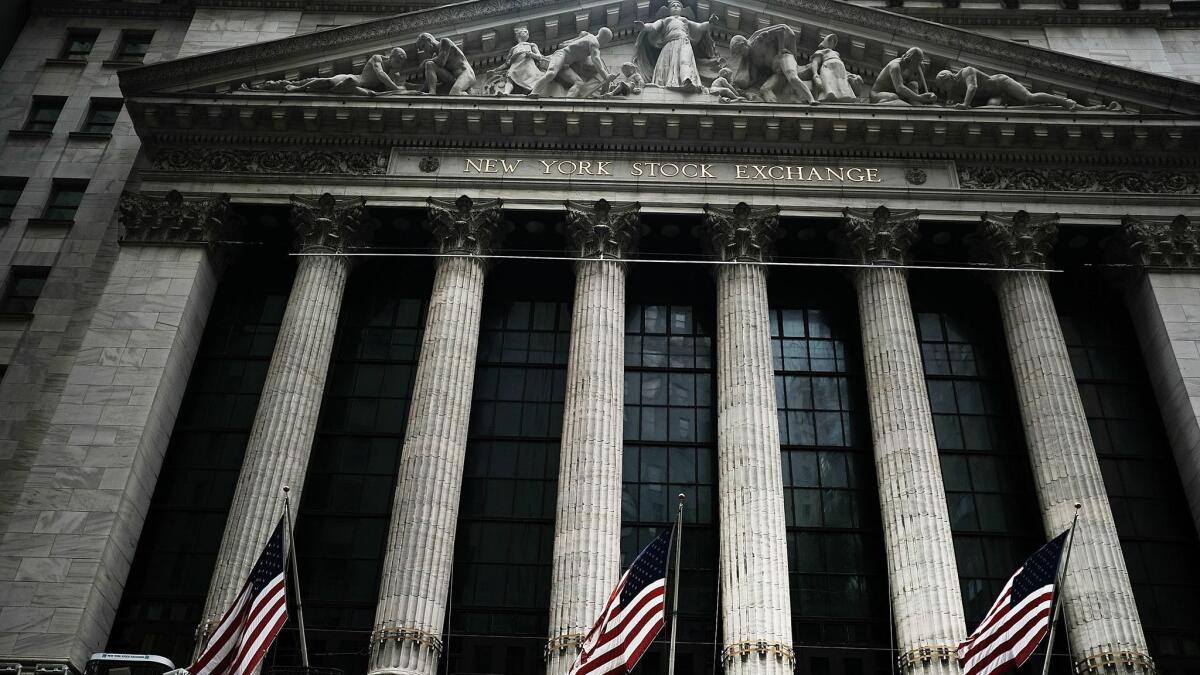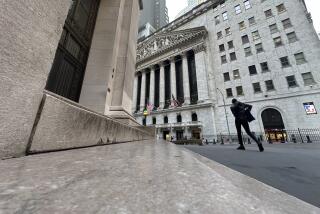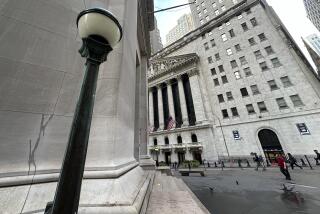Stocks mostly rise, powered by healthcare and energy companies

Wall Street capped a day of volatile trading with a late buying spree that sent U.S. stock indexes to a mostly higher finish Friday. Still, the benchmark Standard & Poor’s 500 index notched its second weekly loss in four weeks.
Gains by healthcare and energy companies powered the market higher.
Stocks got a brief boost after President Trump expressed optimism that the United States and China will reach a deal to resolve their costly trade dispute. Representatives of the countries have resumed talks.
Large retailers and media and communications companies were laggards.
“The market and market participants are more unsettled now than they have been in years,” said Tom Martin, senior portfolio manager with Globalt Investments. “We’re that much further on in the cycle, and you have these tariffs and trade wars that are really still in the very early stages.”
The S&P 500 index rose 6.07 points, or 0.2%, to 2,736.27. The Dow Jones industrial average advanced 123.95 points, or 0.5%, to 25,413.22. The Nasdaq composite slipped 11.16 points, or 0.2%, to 7,247.87. The Russell 2000 index of smaller companies ticked up 3.41 points, or 0.2%, to $1,527.53.
The S&P 500, which finished higher for the second straight day, ended the week with a loss of 1.6%.
One of the day’s market swings came as traders reacted to Trump’s remarks on U.S.-China trade. “I think a deal will be made,” Trump said. “We’ll find out very soon.” Stocks snapped higher, with the Dow briefly jumping as much as 220 points before pulling back to about where they were beforehand.
Soybean futures — which have fallen sharply since this spring as the trade dispute with China led to a steep drop in China’s purchases of U.S. soybeans — climbed to $8.92 a bushel from $8.83 after Trump’s comments. They had traded as high as $10.78 a bushel in early March.
The Trump administration has imposed a 10% tariff on $200 billion worth of Chinese goods over complaints Beijing steals or pressures foreign companies to hand over technology as the price of market access. That tariff is set to rise to 25% in January. An additional $50 billion worth of Chinese goods already is subject to 25% duties. Beijing has responded with tariffs on $110 billion worth of American goods.
Washington and Beijing resumed talks over their spiraling trade dispute this week ahead of a meeting between Chinese President Xi Jinping and Trump, China’s Commerce Ministry said Thursday.
Healthcare stocks were among the biggest gainers Friday. Universal Health Services climbed 3.9% to $133.
California power provider PG&E surged 37.5% to $24.40 after the president of the utility’s state regulator said it was essential for a power company to have the financial strength to operate safely. The remark late Thursday by California Public Utilities Commission President Michael Picker appeared to reassure investors who worry that the company may face a torrent of costs related to the devastating Camp fire in Northern California. There has been speculation that PG&E’s equipment may have set off the blaze, which started Nov. 8 and has killed dozens of people.
Fellow power company Edison International, which owns Southern California Edison and also has been facing wildfire-related concerns, jumped 15.4% to $54.45.
Nvidia led a sell-off in technology stocks. The chipmaker plunged 18.8% to $164.43 after saying it had a large number of unsold chips because of a big drop in the mining of cryptocurrencies.
Retailers also weighed on the market. Nordstrom dived 13.7% to $50.93 after the department store company issued weak guidance for the full year. That disappointing outlook overshadowed the chain’s third-quarter results, which beat analyst estimates.
Williams-Sonoma tumbled 11.2% to $53.76 after the cookware seller said products were delayed because of shipping congestion out of China as exporters hurry to get ahead of U.S. tariffs.
Benchmark U.S. crude oil was unchanged at $56.46 a barrel; it rose Wednesday and Thursday, but it’s still down about 13% for the month. Brent crude, used to price international oils, rose 0.2% to $66.76 a barrel in London.
Oil prices helped lift energy stocks. Helmerich & Payne rose 4.2% to $62.59.
Heating oil held steady to $2.07 a gallon. Wholesale gasoline jumped 1.3% to $1.58 a gallon.
Natural gas, which jumped this week amid forecasts calling for a cold snap across much of the Northeast and South, climbed Friday, rising 5.8% to $4.27 per 1,000 cubic feet. It is now up about 32% this month.
Bond prices rose. The 10-year Treasury fell to 3.07% from 3.11%.
The dollar fell to 112.83 yen from 113.58 yen. The euro strengthened to $1.1412 from $1.1348. The pound rose to $1.2831 from $1.2791.
Gold rose 0.7% to $1,223 an ounce. Silver rose 0.8% to $14.38 an ounce. Copper climbed 1.9% to $2.80 a pound.
Major European stock indexes lost ground as trade tensions and political risks surrounding Britain’s exit from the European Union kept investors cautious.
More to Read
Inside the business of entertainment
The Wide Shot brings you news, analysis and insights on everything from streaming wars to production — and what it all means for the future.
You may occasionally receive promotional content from the Los Angeles Times.










